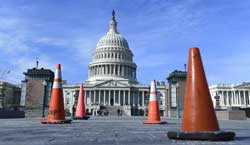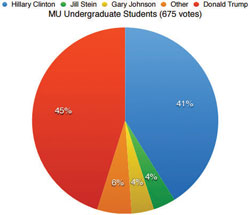After Congress failed to pass an extension of appropriations funding, the government shutdown at midnight on Sat., Jan. 20.
By Fri., Jan. 19, the Extension of Continuing Appropriations Act, 2018 (H.R. 195) was under consideration to extend funding through Feb. 16. The bill passed the House on Jan. 18, but a cloture vote in the Senate failed 50–49, with 60 votes required to end a Democratic-led filibuster shortly before the midnight expiration of the previous continuing resolution.
This ongoing resolution included a six-year authorization for the Children’s Health Insurance Program (CHIP), which had not been funded since October 2017, and it delayed several healthcare taxes from the Affordable Care Act.
However, Democrats preferred a shorter resolution lasting a few days, intending for hearings to negotiate an extension of the Deferred Action for Childhood Arrivals (DACA) policy.
“The recent government shutdown is a product of a strategic interaction between Democrats and Republicans,” Stephen Chapman, Ph.D., an assistant professor of political science, said. “This began with Trump ending the DACA Executive Order that came under Obama, allowing Trump and the Republicans to use it as a bargaining chip,” he explained.
Senate Majority Leader, Mitch McConnell (R-KY) accused Democrats of keeping “the government shuttered for American troops, American veterans, American military families.”
Soon after the shutdown began, Senator Claire McCaskill (D-MO) proposed a bill that would ensure that the military would be paid and receive death benefits during the shutdown.
However, McConnell objected, saying to “restore funding for the entire government before [that] becomes necessary.”
“Both parties were steadfast in their disagreements on the continuing budget resolution, thereby causing the government shutdown,” Chapman said.
“Democrats capitulated to reopen the government with the promise of a Senate vote on DACA, but this issue will arise again as the budget resolution runs out on [Feb. 18].”
As the shutdown became more imminent approaching the midnight deadline, a White House official announced that the Trump Administration hoped to mitigate the impacts of the prospective shutdown.
Unlike in previous shutdowns, the local government in Washington, D.C. continued operating through the shutdown, due to a provision enacted in the previous year’s appropriations legislation, the Consolidated Appropriations Act, 2017.
National Park Service (NPS) facilities generally remained open, although staff were still furloughed and some areas of parks were closed due to lack of staff.
On the first day of the shutdown, the NPS estimated that about a third of its 417 sites were completely closed, including the Statue of Liberty and Liberty Bell. However, national monuments in Washington, D.C. remained open.
Other agencies stayed open by using unspent funds from sources other than annual appropriations, or using fee revenue. The United States Patent and Trademark Office (USPTO) remained open during the shutdown because it had access to fees already collected in prior years.
The Environmental Protection Agency (EPA) announced that it could stay open for a week, and workers from the Department of Energy (DOE) and Department of State (DOS) were told to report to work on Mon., Jan. 22.
“It appears the Trump administration is willing to move somewhat on their hardline position, with talks of allowing 1.8 million Dreamers a path to citizenship,” Chapman said
However, he notes that it may be difficult to determine how much Democrats or Republicans will compromise with the upcoming midterm elections in November.
“I think a lot of members of Congress will try to appeal to their bases as the elections approach,” Alexis Borrino, a sophomore primary education student said.
“I think Republicans will try to run of how they tried to not give ‘amnesty’ to undocumented immigrants, and the Democrats will play up how they fought for DACA recipients.”
On Mon., Jan. 22, a deal was announced to reopen the government the following day.
The Senate voted 81–18 to end debate and proceed to approving new temporary funding, which will expire on Feb. 18. The House subsequently passed the bill, and the President signed it later that evening.
IMAGE TAKEN from Politifacts



